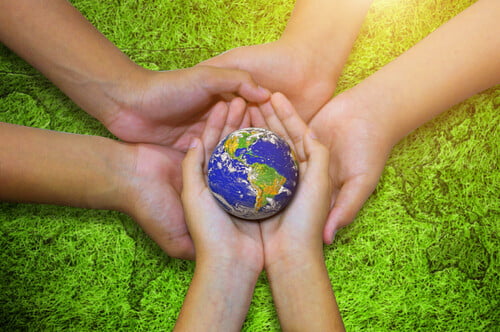

Environment
Unexpected Ways You Can Help the Environment on a Daily Basis
Not all people are selfish, as many falsely believe. There are many of us out there who have decided to put our needs second and take a stand for the planet. This does not mean constantly rallying but making changes big and small in our daily lives that will help protect the environment. Such changes in our daily routines are easier than they might at first appear and they come in all forms; some of which are quite unexpected.
1. Recycling
Recycling is probably the first thing that crossed your mind. Waste management really is one of the best ways to save our planet. Developing the habit of separating household waste is a huge contribution to decreasing the environmental print. Also, opting to buy the product which was made from recycled materials or packaging made from recyclable materials is highly desirable. Because of this and similar consumers’ choices, today most packaging companies use recycled cardboard, for instance. When it comes to the issue of recycling, don’t stop at the household level, as commercial recycling can have a much larger effect. If your company does not recycle its (industrial) waste, team up with other workers and write a petition to the management asking them to start recycling. Most people are open towards this practice and will see it as a chance to improve the company’s image.
2. Water usage
Out all of the water on the planet, only 1% is drinkable, so we must preserve this life-giving liquid. This means using it rationally and by no means wasting it, which is often the case. On a personal level, this includes seemingly trivial things as closing the tap while you brush your teeth. It might seem unimportant, but if you brush twice a day and it takes you some 5 minutes to complete the action, times 365 days in the year … do the math! The devil is in the details such as this one, as well as in the fact that a leaky toilet can waste liter of water, so make sure it is not letting more water than necessary. Finally, if your tap water is potable, drink it instead of buying water bottle which takes up much more energy and drinking water to produce.
3. Ditch the car
The world of today is a world of mobility. Billions of people commute every day but it doesn’t say anywhere that they have to drive a car. In most cases, it is easier to supplant the private vehicle with the mass transit system or simply walking. In urban areas, beside the metro system, there is a developed network of bicycle tracks that are ideal for going to work or school. All you need is a bike and the willingness to cycle. Not only will you reduce your carbon footprint but you will burn calories and stay healthy. Heck, you are going to love riding your bike so much that you will soon hit the off-road track, scanning the shop windows for mountain bike helmets to buy.
4. Save power
If you are thinking that protecting the environment is going to hurt your home budget, you couldn’t be more wrong. The reality is, going green will actually lower your utility bill. This is mainly true for power which you can save in numerous ways. Firstly, there is no need to keep the entire house lit, so make sure that only in the room you are presently in the lights are on; after you leave that room, switch them off. Also, if you are away for the weekend or for a longer period, unplug all devices from the power source. Even they are in the standby mode they still use power, thus unnecessarily increasing your bill at the end of the month. As an additional measure, you can replace all the old light bulbs throughout the house with energy-saving ones. They last up to 10 times longer and use about 2/3 energy less to illuminate your home. Admittedly, they are more expensive to buy but the investment soon pays off.
5. Reduce printed material
The use of paper has become so extensive nowadays that is becoming dubious whether there are enough forget top feed our demand for this resource. That is why you shouldn’t be part of the problem but try to find a solution. In practice, every blank sheet of paper should be used to the maximum, which means writing on both sides of it. See with your company’s management could some internal protocols be printed on both sides to decrease the paper use. Also, bring it before the school board this issue and ask them to be rational when it comes to paper use at your children’s school. One notebook can often serve two purposes, so there is no need to buy another one.
Make full use of everything electronic, from e-readers to e-mails, to avoid printing. A book needs not to be bought if you wish to read it, just download it to your e-reader.
Final Thoughts
Always keep in mind that saving the environment daily is a repeated task. It starts as a decision but it is put into action through our daily routines. As daunting as saving the environment may seem, taking small steps to improve the planet we live on is simpler than you’d think. Just take things one step at a time, and keep the earth’s well-being in mind.


 Environment9 months ago
Environment9 months agoAre Polymer Banknotes: an Eco-Friendly Trend or a Groundswell?

 Environment11 months ago
Environment11 months agoEco-Friendly Home Improvements: Top 7 Upgrades for 2025

 Features8 months ago
Features8 months agoEco-Friendly Cryptocurrencies: Sustainable Investment Choices

 Features10 months ago
Features10 months agoEco-Friendly Crypto Traders Must Find the Right Exchange





























